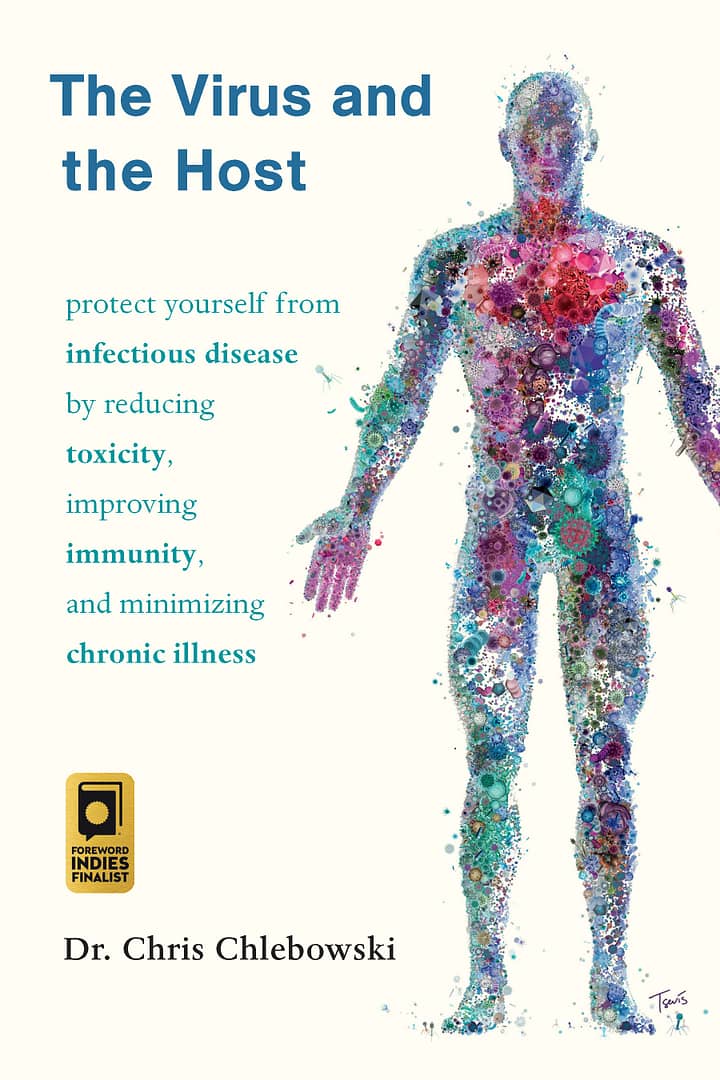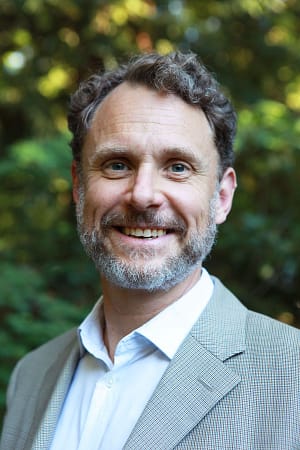The Virus and the Host
Protect Yourself from Infectious Disease by Reducing Toxicity, Improving Immunity, and Minimizing Chronic Illness

| Pages: | 288 pages |
| Size: | 6 x 9 inch |
| Publisher: | Chelsea Green Publishing |
| Pub. Date: | September 21, 2022 |
| ISBN: | 9781645020912 |
The Virus and the Host
Protect Yourself from Infectious Disease by Reducing Toxicity, Improving Immunity, and Minimizing Chronic Illness
*2022 Foreword INDIES Book of the Year Award Finalist for Health
Learn how to take control of your health—and decrease susceptibility to infectious viral disease before it strikes.
There will almost certainly be more pandemics in our future. Yet, during the coronavirus crisis, not a single major public health official took the simple step of telling Americans what we all need to hear:
Robust good health—healthy immunity, low inflammation, low toxic burden, and freedom from stealth infection and chronic disease—is our best defense against infectious viral disease.
Of course, it’s not that simple. The way our bodies interact with infectious disease is complicated—both a function of the “germ” and the “terrain”—the virus and the host. In The Virus and the Host, Dr. Chlebowski succinctly describes emerging science on the virome and how toxic exposure, chronic inflammation, infections, and chronic diseases interact and predispose us to poor outcomes from acute viral infection. He then clearly outlines the tools needed for better health, including:
- How to eat like your life depends on it
- The best nutrients to supercharge your immunity
- How to harness the power of botanical medicine
- How to detoxify simply and safely at home
- Valuable information on simple treatment and recommended diagnostic tests for given conditions
As we move forward from the tragedy of COVID-19, it is essential that we come together to learn from our mistakes, and work hard—and work together—to prevent a similar crisis in the future. When the next pandemic hits, we need to be better prepared. Now is the time to do something, and it is the best investment we can make so that when—not if—the next “big one” hits we can keep our loved ones and ourselves safe and healthy.
“A gem of a book at a timely moment in history.”—Stephanie Seneff, author of Toxic Legacy
“This book left me feeling optimistic and empowered, and gave me greater knowledge about the history of viruses, as well as their future.”—Erin Elizabeth, author; public speaker; founder, Health Nut News
Reviews and Praise
“The Virus and the Host is a practical and empowering guide to developing resilience against viral infections like COVID-19. By giving readers simple ways to improve nutrition, reduce inflammation, tackle toxicity, and even harness the power of botanical medicine, Dr. Chlebowski steps in to the do the job that our public health officials have not: educating the public that, while we can’t always avoid viral infection, we have immense power to improve our outcomes from it. Dr. Chlebowski is a sympathetic and supportive guide whose main goal is to help his patients—and his readers—live vibrant, healthy, and fulfilling lives. A must-read.”
—Dr. Mark Hyman, MD, New York Times best-selling author of The Pegan Diet, Food Fix, and Eat Fat, Get Thin
More Reviews and Praise
“The Virus and the Host shows us that we cannot understand how viruses affect the human body without also looking at the terrain they inhabit. Dr. Chris Chlebowski unlocks the key to survival in a world full of microorganisms—in a way that keeps our bodies, local ecosystems, and the larger world, in a healthy balance. I highly recommend The Virus and the Host. It is one of the most important books of our time.”
—Dr. Henning Saupe, author of Holistic Cancer Medicine
“Dr. Chlebowski has written a gem of a book at a timely moment in history. He coins the term ‘Biological Equilibrium Theory,’ blending the germ and terrain theories of disease into a unified whole. The book has a wealth of specific information on herbal remedies, detox programs, healthy food choices, and much more—a how-to manual on staying well in a toxic world.”
—Dr. Stephanie Seneff, senior research scientist, MIT Computer Science and Artificial Intelligence Laboratory; author of Toxic Legacy
“Dr. Chris Chlebowski’s perspective on mitigating body burden and supporting innate immunity is the most balanced and sensible I’ve seen. A compelling historical account as well as an unapologetic challenge to redesign our future via the science of epigenetics, The Virus and the Host is the obvious path forward, whether you’re looking to prepare for the next outbreak of disease or prevent autoimmunity.”
—Jill McLaughlin Grunewald, Functional Medicine Certified Health Coach, autoimmunity specialist, and best-selling author of The Essential Thyroid Cookbook
“A valuable read, full of practical information about how to stay healthy in the age of pandemics.”
—Jennifer Margulis, award-winning science journalist, and coauthor of The Vaccine-Friendly Plan
“In The Virus and the Host, Dr. Chlebowski has distilled his in-depth research into a compelling read about how to treat a virus, where our healthcare system has gone wrong, and how it can be improved upon. This book left me feeling optimistic and empowered, and gave me greater knowledge about the history of viruses, as well as their future.”
—Erin Elizabeth, author; public speaker; founder, Health Nut News
“Dr. Chris breaks down complex topics into clear, usable, and helpful information. He not only discusses viruses but also how to avoid the other ‘big ones’—cancer, heart disease, and diabetes. This book is for anyone who wants to know how to truly get well and stay that way.”
—Kelly Moeggenborg, a.k.a. Kelly the Kitchen Kop, author of Real Food for Rookies
“In The Virus and the Host, Dr. Chris Chlebowski lays out how typical modern ways of living are making and keeping us sick. He pulls back the curtain to shed light on how so much is in our control to address and reverse both chronic and acute illness. With clarity and spirit, he guides readers with actionable steps for reaching our best and most vibrant health.”
—Dr. Amy Rothenberg, author of You Finished Treatment, Now What?






